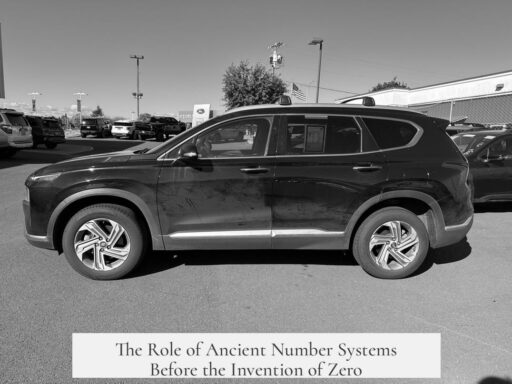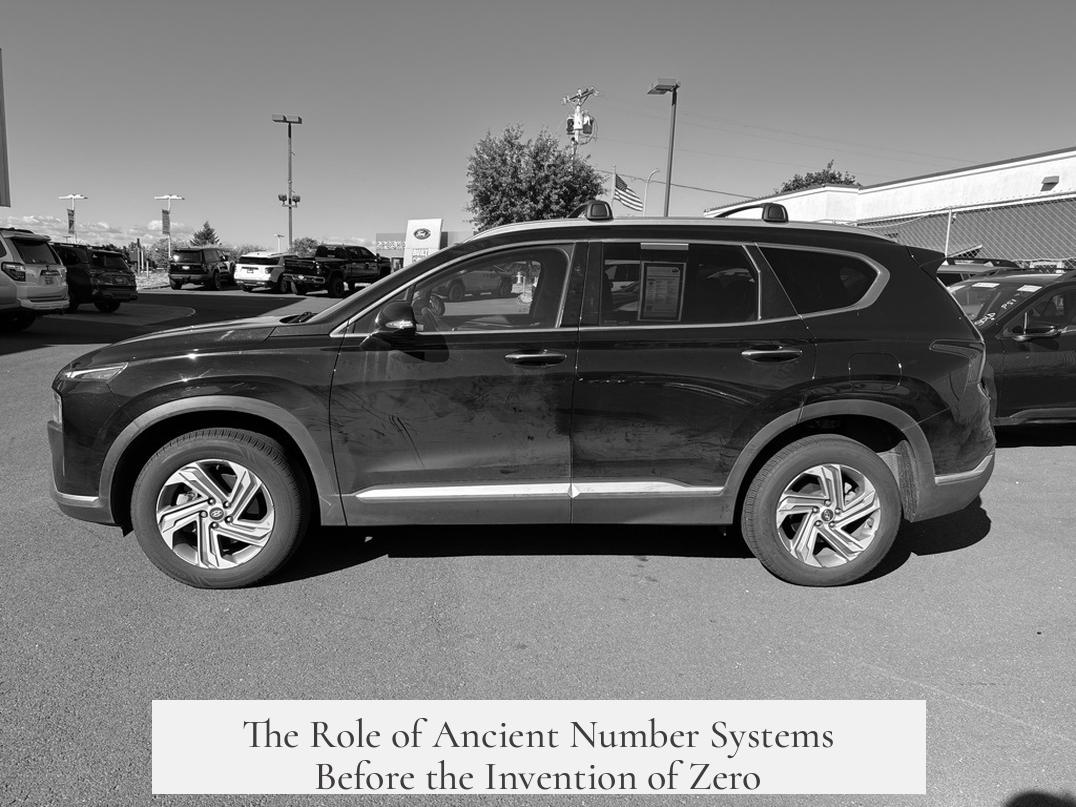Before the formal invention of zero in ancient India, people employed various strategies to represent numbers and the absence of quantity. Early civilizations understood the concept of “nothing” but did not treat it as a number to be written down. Hence, numerical records and counting systems functioned without a symbol explicitly denoting zero.

Early counting often rested on tangible quantities rather than abstract notation. For example, merchants or farmers might express that they have “nothing left,” conveying absence verbally or contextually rather than in writing. This distinction between “nothing” and zero as a number shaped numerical practices before zero became standardized.
Without zero, ancient number systems adapted to represent values efficiently:

- The Babylonians, approximately 5,000 years ago, used a base-60 system to count and record numbers. Their symbols were wedges pressed into clay tablets. Notably, they had no explicit zero symbol, but their positional system worked by using spacing or marks like a longer wedge to indicate groupings of sixty. This method allowed them to write numbers such as 61 by combining symbols without needing a zero character.
- Their method illustrated how numbers could be represented by position and repetition without zero. For example, 60 was a single distinctive mark, and 61 combined that mark with the symbol for one. While effective for their counting, this system lacked a placeholder zero.
Elsewhere, other cultures independently developed forms of zero, reflecting their mathematical needs:
- The Mayans, around 400 BCE, invented a zero symbol represented as a shell. Their number system was base-20 and used dots and sticks alongside the shell for zero. This zero was crucial in their calendar and astronomy calculations, where numbers “looped” through cycles requiring a detailed placeholder.
- Their mixed base system combined factors of 18 and 20, matching calendar months and days. This complexity created a functional need for a zero to represent no quantity in specific positional contexts, highlighting how zero emerges from practical requirements.
In contrast, ancient Egyptian mathematics presents an ambiguous picture. Although there is no clear zero numeral, some scholars suggest Egyptians possibly had a conceptual equivalent:

- Records like a monthly balance sheet from around 1770 BC show a symbol called nfr, which means “good,” “complete,” or “beautiful.” This symbol may have indicated a zero balance in accounts, suggesting an implicit understanding of zero as representing a neutral or empty quantity.
- The nfr symbol also appeared in architectural plans related to pyramids, serving as a reference baseline or “zero” point to measure values above or below it. This use of a reference point resembles the modern concept of zero on a number line.
- Although not a zero as a number like in later Indian mathematics, these examples imply that Egyptians recognized a notion of “nothingness” and used symbols to mark neutrality or absence in practical contexts.
Before zero’s invention in India, numerical records and counting systems managed by relying on the context of “nothing” and other symbols rather than a distinct zero symbol. Numbers were often represented with additive or positional methods without placeholders representing zero explicitly.
| Civilization | Number System | Zero Concept | How Absence Was Expressed |
|---|---|---|---|
| Babylonians | Base-60 positional system | No symbol for zero | Used spacing and special marks for positional values, no explicit zero |
| Mayans | Base-20 with mixed factors | Zero symbol: shell | Zero used as placeholder in calendar and counting |
| Egyptians | Non-positional, hieroglyphic | Possible zero concept via nfr sign | Used symbols to denote zero balance and reference points |
| Ancient India | Positional decimal system | Invented explicit zero symbol (sunya) | Formalized zero as number and placeholder |
At its core, zero emerged when mathematical practices required a symbol to represent “no quantity” as a numerical value, not just the absence of things. This breakthrough transformed arithmetic, enabling place value systems and more advanced calculations.

Before zero’s formalization, counting and record-keeping depended on context, language, and visual methods to imply “nothing.” Ancient societies succeeded in trade, astronomy, and governance without zero, relying on their symbolic systems to express numbers.
Today, understanding these early approaches reveals how mathematical ideas evolved step by step. Zero started as a concept of “nothing” but became a crucial mathematical tool because of human innovation responding to practical needs.

- Before zero, “nothing” was a concept but not a number recorded in writing.
- Babylonians used a sophisticated base-60 system without a zero digit, relying on context and spacing.
- Mayans independently created zero as a shell symbol for calendar and numeric cycles.
- Egyptians likely had a symbolic zero concept, evidenced by the nfr sign in accounts and architecture.
- The Indian invention of zero transformed numbers into a positional decimal system with a formal zero digit.
The number zero was invented in ancient India, but what did people do before it existed?
Before zero emerged as a formal number in ancient India, people had a concept of ‘nothing’ but simply didn’t treat it as a number to write down. So how did they count and calculate without that all-important placeholder? Let’s unravel this ancient riddle together.
Imagine you’re a merchant thousands of years ago. You sell your last piece of bread and say, “I have nothing left.” You understand “nothing” perfectly, but you don’t write down a symbol for it in your ledgers. It’s a feeling, a state, not a number. This distinction between nothing and zero is critical. People understood absence; they just didn’t represent it numerically yet.
How did ancient number systems work without zero?
Look back about 5,000 years to the Babylonians. They used a base-60 system, which sounds intricate but was quite practical for their time. Instead of zero, they scribbled symbols like an upside-down triangle for 10 or a big line for 60. If you wanted to write 61, you’d draw a big line (for 60) and then a small triangle (for 1). No zero symbol needed!
Their numbers were clever. They simply kept stacking symbols to build bigger numbers. But if someone wanted to express an empty quantity explicitly, they didn’t. They relied on context, not zero placeholders. This approach worked fine for commerce, astronomy, and daily life back then.
But what about other cultures?
Interestingly, the Maya civilization independently developed a zero symbol around 400 BCE—entirely separate from India’s invention. The Maya had dots (1), sticks (5), and shells representing zero. They used these in a base-20 system deeply tied to their calendars and astronomy—fields where knowing “nothing” or “zero” as a number became essential.
Why? Because their calendar system had 18 months of 20 days and a short 5-day extra period. This “mixed base” system made zero indispensable as a placeholder when numbers looped back to the start—like how we go from 9 back to 0 in decimal. Without zero, their complex dates and calculations would’ve gotten messy fast.
Were ancient Egyptians ahead or behind?
The Egyptians’ stance on zero is a bit murky. Some archaeologists and historians have found symbols that might represent zero or a concept of “nothing” in their records. For example, the symbol nfr, which means “good” or “complete,” appears in balance sheets and as a reference point on construction plans—like a marker for ground level or zero elevation.
This symbol helped measure things as “above zero” or “below zero” when planning pyramids. But whether Egyptians truly saw zero as a number the way we do today remains debated.
So what did pre-zero math look like?
In practice, if you had three sheep and lost all three, you’d say you have “nothing” left but wouldn’t write zero in your tally marks. You’d adjust your count accordingly. Similarly, large numbers grew by adding symbols rather than relying on position and zero as a placeholder.
The Babylonians and Egyptians often used context clues and symbols to handle missing quantities. The Mayans’ need for zero arose from their calendar’s cyclical nature, requiring more sophisticated notation.
Why is zero such a big deal?
- **It acts as a placeholder:** Without zero, distinguishing between numbers like 10 and 100 becomes tricky.
- **It’s a number:** Zero isn’t just “nothing.” It’s a number with unique properties essential for algebra and calculus.
- **It revolutionized math:** Indian mathematicians formalized zero around the 5th century CE, unleashing powerful mathematical tools.
Ironically, before zero, math worked quite well for basic tasks. But imagine trying to solve algebra or keep complex astronomical records without it. Think of zero as the secret superpower of math.
Lessons from history for today’s learners
If zero was so hard to grasp and invent, you can give yourself some slack when staring down a tough math problem. Even the greatest minds took centuries to conceptualize what zero truly means.
It also shows the power of invention to progress science. The zero symbol emerged not out of thin air but because people faced real problems—like tracking dates or trade—that demanded a new way to think about “nothing.”
Wrapping it all up
Before zero’s invention in ancient India, people like the Babylonians, Egyptians, and even the Mayans got by without writing zero as a number. They used other symbols, context, and clever counting methods. The concept of “nothing” existed but was simply not a number.
Ancient civilizations adapted to their needs: Babylonians kept counting with base-60 notations, Egyptians hinted at zero-like symbols for practical purposes, and the Mayans created their own zero for calendars.
So next time you hit zero on your phone or wallet, think about the long, winding journey humans took to tame the idea of ‘nothing’ and turn it into one of math’s most important inventions.
FAQs
- Did the Babylonians ever use zero? They didn’t have a zero symbol like we do. Instead, they used context clues and symbols for numbers but couldn’t represent zero as a standalone number.
- How did the Mayans’ zero differ from ours? Mayans used a shell to symbolize zero in their base-20 system, focused mainly on calendar and astronomical calculations.
- Did Egyptians invent zero? It’s unclear. Symbols like nfr might indicate a zero-like concept, but no complete zero number was formally recognized.
- Why did India’s zero matter so much? Indian mathematicians not only invented zero but also gave it formal mathematics rules—making arithmetic and algebra simpler globally.
Mathematics isn’t just formulas but a story of human problem-solving, discovery, and the eventual acceptance that “nothing” deserved a number.




